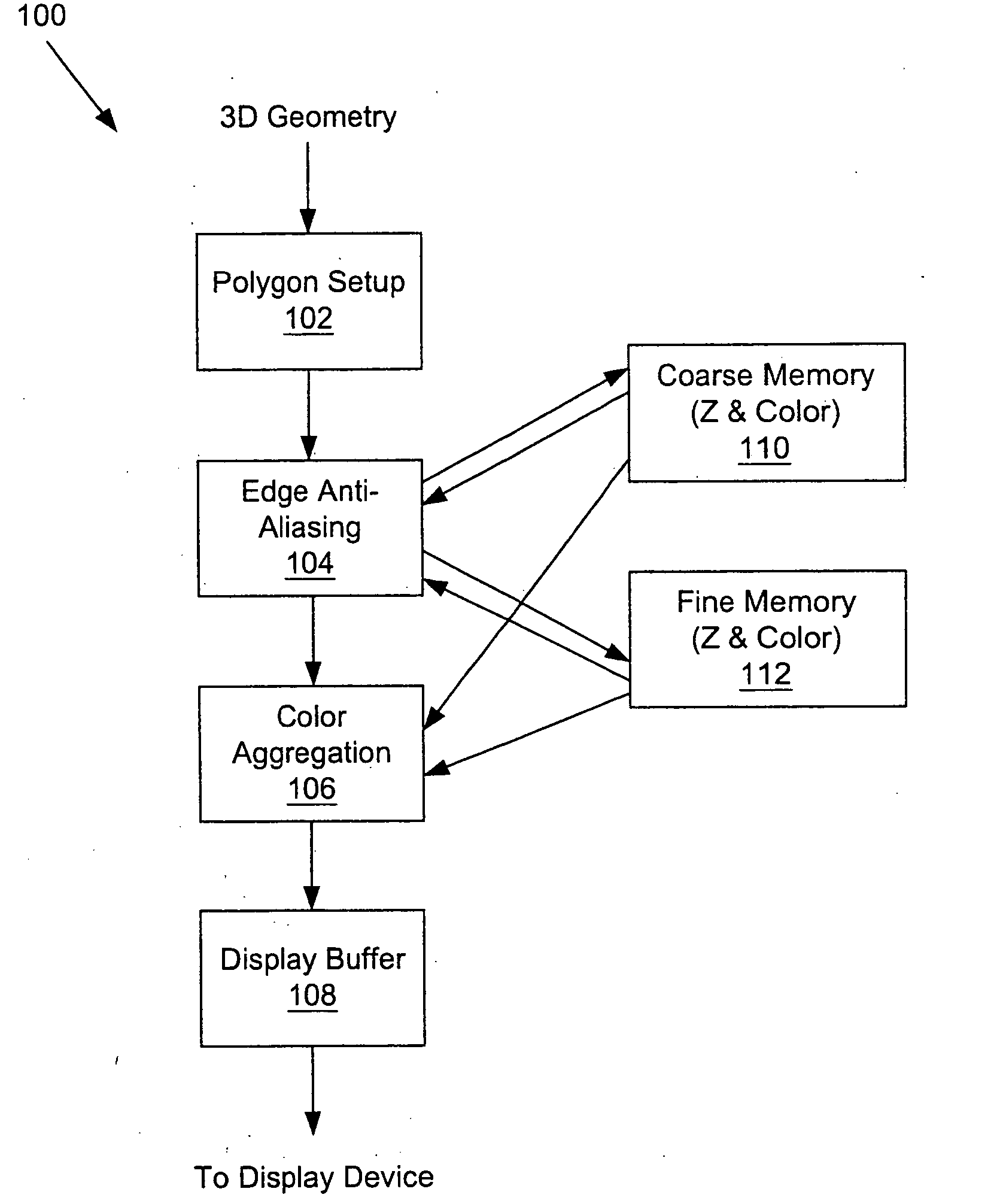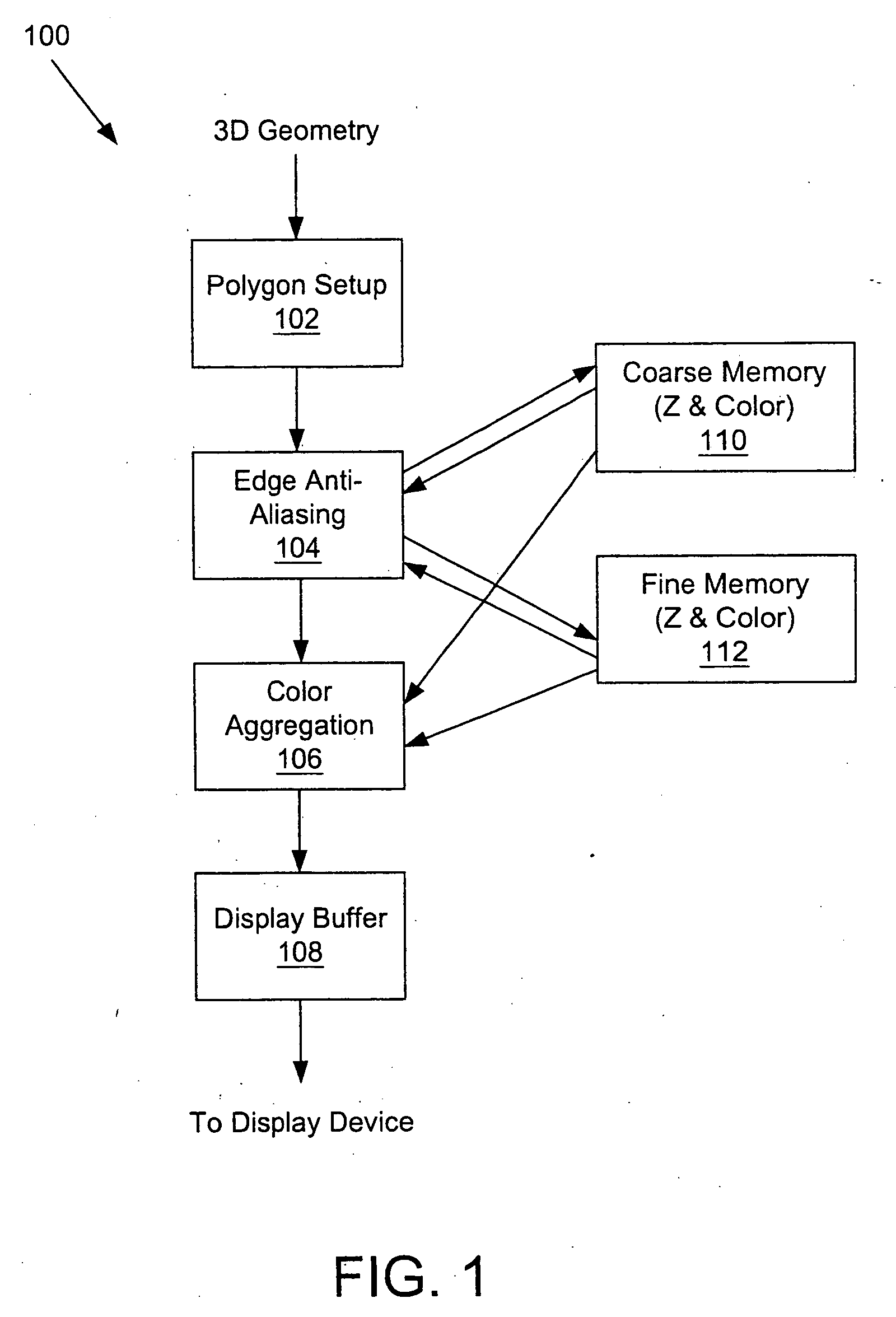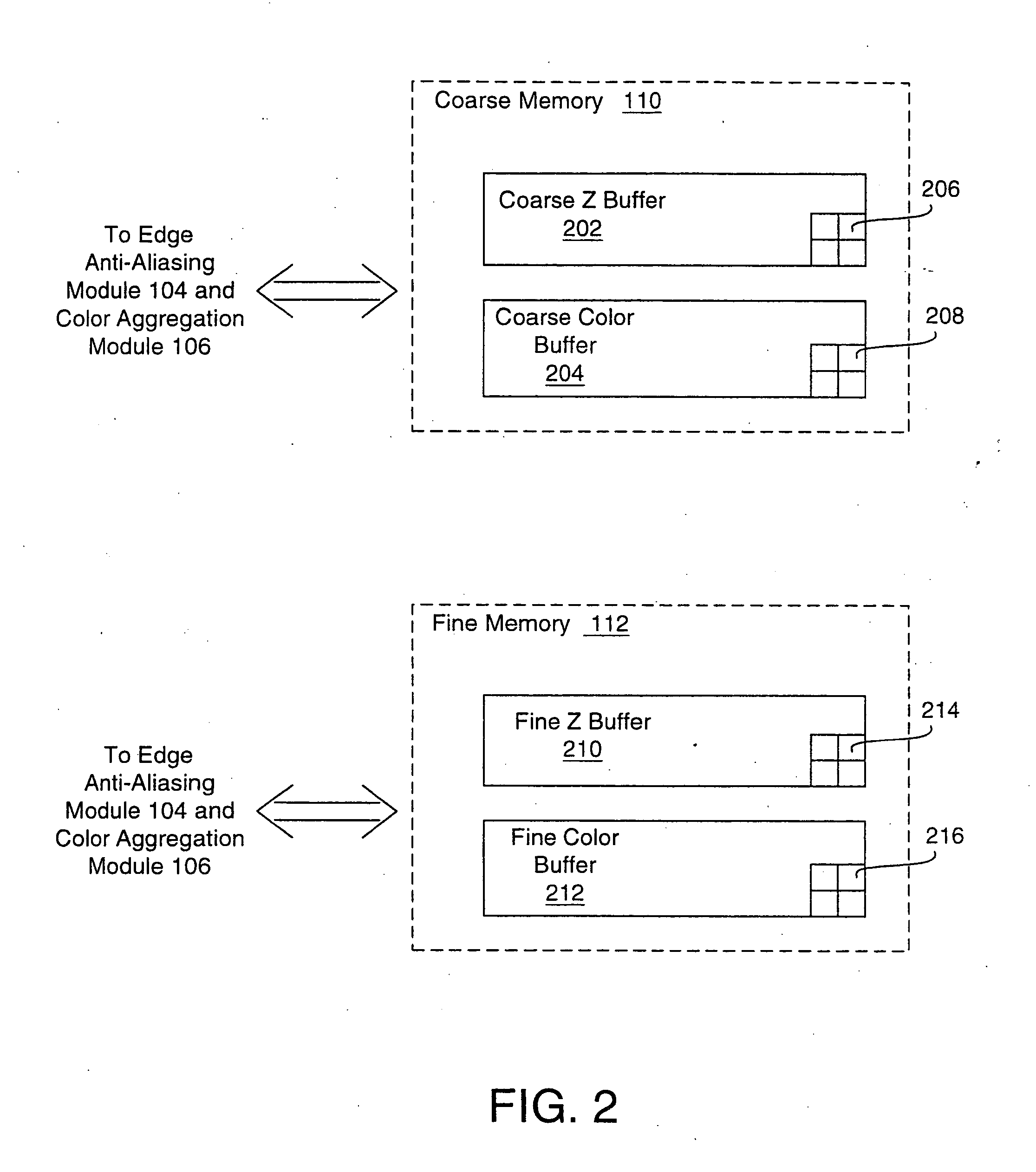Selective super-sampling/adaptive anti-aliasing of complex 3D data
a 3d data and anti-aliasing technology, applied in image data processing, instruments, cathode-ray tube indicators, etc., can solve the problems of aliasing typically, significant affecting the rendering scene, and the algorithm assumes the use of unbounded memory, so as to reduce the memory storage requirements and traffic
- Summary
- Abstract
- Description
- Claims
- Application Information
AI Technical Summary
Benefits of technology
Problems solved by technology
Method used
Image
Examples
Embodiment Construction
[0044]FIG. 1 illustrates a selective super-sampling system 100 according to one embodiment of the present system and method. The super-sampling system 100 is typically implemented in a graphics system in a computer or similar processing device. The super-sampling system 100 includes a polygon setup stage 102 (typically a triangle setup stage), edge anti-aliasing module 104, color aggregation stage 106, display buffer 108, coarse memory 110 and fine memory 112. The functions of the polygon setup stage 102 include receiving 3D geometry elements (e.g., triangles or other graphic primitives) and processing the data describing the size, shape, position and other relevant characteristics of the graphics primitives. The primitives may be defined in three-dimensions using Euclidian coordinates or in four dimensions using homogenous coordinates, and projected onto a two-dimensional plane by a known algorithm. In some cases, the polygon setup stage 102 is also capable of generating an edge fu...
PUM
 Login to View More
Login to View More Abstract
Description
Claims
Application Information
 Login to View More
Login to View More - R&D
- Intellectual Property
- Life Sciences
- Materials
- Tech Scout
- Unparalleled Data Quality
- Higher Quality Content
- 60% Fewer Hallucinations
Browse by: Latest US Patents, China's latest patents, Technical Efficacy Thesaurus, Application Domain, Technology Topic, Popular Technical Reports.
© 2025 PatSnap. All rights reserved.Legal|Privacy policy|Modern Slavery Act Transparency Statement|Sitemap|About US| Contact US: help@patsnap.com



